With the rise in popularity of light painting in photography, it should come as no surprise that painting with fire is beginning to see the same increase of interest. Barry Elder, a Manchester based photographer, has a decent amount of experience working with fire and is kind enough to share his process with us. It goes without saying, however, that working with fire can be extremely dangerous if the proper precautions and safety procedures are not followed. Before you get started, have a look at the following video by Elder. It contains a wealth of safety information, a rundown of the equipment you will need, and an overview of how to execute fire painting:
Disclaimer: This guide is intended for reference only. Before you come to any conclusions, I strongly advise you read other sources of information regarding fire and fuels. This will ensure you have a good grasp on the larger picture. As with all information on the Internet, you should never rely on just one source; use multiple sources and fully understand every aspect before you commit. Should you decide this is absolutely something you must try, you should understand the possible risks involved. Risks that could include property damage and injury—or worse—to yourself and others. So be smart and be careful; you are playing with fire, after all!
Introduction
When fire painting a firewall or firewave (a concept conceived by Van Elder Photography) the main issue you will encounter is over exposure, this can be affected by several factors, they include:
- Wind: Wind doesn’t help when fire painting. If there is wind it will cause the flames to flicker, reduce the flames, or even blow them out! If there is any wind at your primary location, don’t even consider fire painting; it’s a waste of time, energy and of course fuel. Either find a location free from wind or regroup to another night when there is no wind.

In this example the wind picked up half way round the car and ruined the effect.
- Ambient temperature and humidity. If the ambient temperature is high it affects the temperature of the fuel, which increases ignition and also aids in the continuation of the combustion process. A high ambient temperature will lead to an end result with a more intense flame. The opposite can be said for cold ambient temperatures. The temperature of the fuel will also affect how the fuel ignites, the colder the ambient temperature is, the longer it will take to raise to the fuels ignition temperature. So try to keep your fuel warmish before you soak the rope on cold nights.
Tip: The flash point (when it ignites, aka ignition temperature) of paraffin is between 37 and 65 °C (100 and 150 °F).
- Walking speed. The speed at which you walk, much like the wind, affects how the rope or strap burns. If you walk too fast the fire will nearly go out, too slow and the image will overexpose. To avoid these scenarios you need to cater to this with your camera settings. We will come to this shortly. Before going out on location, practice your walking speed so you know what speed you can walk before the flames start to reduce. Ideally, you want maximum flame to achieve a “realistic” flame effect. I have had to slow down and speed up mid exposure on a number of occasions, so keep an eye on the flames and adjust your walking speed accordingly.

Wobble your fire rope as you move to help the flame get more oxygen and break up the patterns, adding a more “realistic” flame effect.
- Rope/strap. The thickness of the rope/strap is another factor to consider, if it’s thick it will hold more fuel and burn brighter for longer. If you are using a thin rope/strap then the opposite will occur. In both scenarios you will have to adjust your camera settings accordingly. I use a combination of kevlar ropes and straps and I would advise you do the same. As a temporary solution you could use a cotton based rope; however, stay away from man made fibers as they will melt very quickly.
Tip: Always remember, do not to let your rope burn out! It damages the kevlar and reduces it’s life–extinguish early and save your rope/strap.
- Distance. As you can imagine, the farther away from the camera you are the less light will be picked up compared to when you are close. You will find the settings (or the use of ND filters) that work at 5m (16.4 ft) will not give the same effect at 10m (32.8 ft). If you’re doing a shot like the image below, you will need to consider your walking speed, slowing down the further you get from the camera.

Adjust your walking speed the farther you move from the camera to maintain consistency in the fire’s brightness.
Tip: When covering large areas, the person holding the fire rope will need to keep and eye on where they are walking. It’s a good idea to have your assistant follow you and advise on how the flame is burning and shout commands to slow down or speed up.
- Camera settings. First, manually set the ISO to 100 and white balance to something static, leaving only aperture to experiment with. Next, close your aperture to something like f/10, do a pass, and check the results. If it’s over exposed, close the aperture further and try again. If your aperture is as small (f/22) as it goes and you are still over exposing it’s time for neutral density filters. I’ve been know to use the 2, 4 or 8—it all really depends on the current situation! It would be best to ask your assistant to perform a few passes with the firewall, allowing you time to quickly adjust settings and find what works for your current situation. Bear in mind, what worked in one situation may not work in another. Always do a couple test passes to ensure you have the exposure just right or exposed enough to work with it in post production. Below are some examples of how settings affect the flames. These are all shot at 24mm focal length about 3.5 meters (roughly 11.5 feet) from the firewall and are straight out of the camera, no post processing applied.

The frames on the left were made without the use of filters, whereas the images on the right were made with different strength neutral density filters as noted on the individual frames.
Tip: One major point to bear in mind is the fact that you can never recover from over exposure. You have much better chance to recover light from underexposed images, so don’t forget to shoot in RAW! During post processing you can try layering the exposure using screen, followed by some tweaking with new adjustment layers to maximize the effect and bring out some light.
Post Production
As we know, it is impossible to recover anything from over exposure, so make sure you under expose and recover the light in post production. Here is a very quick and simple method to return some color from an under exposed image.
- Let’s use the wobble image from above, this is how it looks straight out of the camera:

Settings- WB:Flourescent, ISO:100, f/20 and used a ND8 Filter – Camera 3.5m from Firewall)
- A few tweaks on import.

Boosted Clarity to 100+, increased vibrancy, and a few other adjustments until I was happy with the color and sharpness.
- Now we duplicate the layer and set it to Screen, then we add the following new adjustment layers:
Brightness (-2) Contrast (16)
Vibrance (+1) Saturation (-3)
Hue and Saturation [(reds) Hue 0 Sat +41 Light -33]

Adding the adjustment layers as noted above.
- Import into Lightroom, add some noise reduction and +70 on clarity and this is the final result:

After making the adjustments, this is the finished image.
Final Thoughts
As fire is such a volatile substance it can drastically be affected by the factors listed above. There is, however, another consideration. You have bear in mind that the goal posts are constantly moving as the fuel burns off. Learn to adapt quickly to maximize each burn.

Photo captured by Barry Elder.
I think fire painting is akin to light painting with a torch that has a dodgy connection, causing the light to continuously flicker and change brightness. This, in my eyes, is what makes fire painting such a unique challenge! Fire painting comes down to trial and error, a little luck, and finding what works for your specific situation. Don’t forget to have fun! Hopefully, this guide has helped you understand a little more about shooting a firewall.
Like This Article?
Don't Miss The Next One!
Join over 100,000 photographers of all experience levels who receive our free photography tips and articles to stay current:

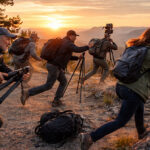
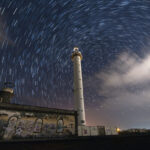
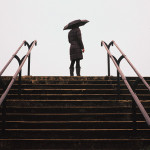
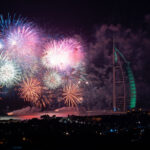
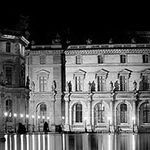
Leave a Reply